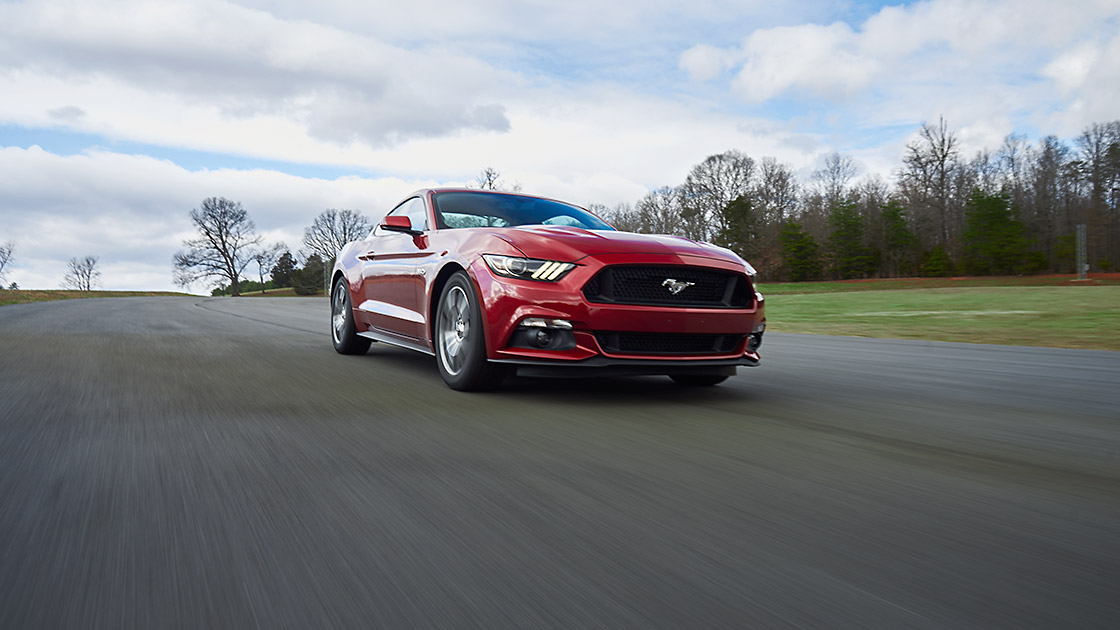Vehicles are packing more horsepower, and that pushes up travel speeds
May 24, 2016

The association between higher speed limits and faster vehicle speeds is well-established, but not as much is known about how horsepower affects travel speeds. A new IIHS study finds that high-horsepower vehicles are more likely to exceed the speed limit, particularly by 10 mph or more, and have higher mean speeds than vehicles with less powerful engines.
Faster speeds increase both the risk of crashing and the severity of injuries that occur. IIHS research has shown that rising speed limits have resulted in higher fatality rates.
"We know that speeds and fatality rates are going up, and part of the problem is that states have raised speed limits. What this new study tells us is that a trend toward more powerful engines is also to blame," says Chuck Farmer, the Institute's vice president for research and statistical services.
It's not just sports cars that are packing more power. Even mainstream sedans have high-performance capabilities. From model year 1985 to model year 2015, mean vehicle power, defined as horsepower per 100 pounds of vehicle weight, increased by 60 percent for cars, 65 percent for pickup trucks and 66 percent for SUVs, data from the Highway Loss Data Institute (HLDI) show. Prior analysis by HLDI indicates that vehicle power is strongly associated with higher insurance losses.
In the new study, IIHS researchers used speed cameras to collect speeds of free-flowing traffic on heavily traveled roads in Northern Virginia with various speed limits during off-peak hours in spring 2013, as well as photographs of license plates and drivers. License plate numbers were sent to driver licensing agencies to obtain vehicle identification numbers (VINs) and the vehicle owner's age, gender and ZIP code. Vehicles were included in the study if the age and gender of the photographed driver matched the owner's age and gender. VINs were decoded to obtain the curb weight and horsepower of vehicles. Researchers calculated the effects of vehicle power on mean travel speeds and estimated the effects of vehicle power on the likelihood of a vehicle traveling over the speed limit and more than 10 mph over the limit.
A 3-unit increase in horsepower per 100 pounds of vehicle weight was associated with a 38 percent increase in the likelihood of a vehicle exceeding the speed limit by more than 10 mph, a 7.7 percent increase in the likelihood of a vehicle exceeding the speed limit by any amount and a 2.2 percent increase in mean vehicle speed, IIHS found. This was the case after controlling for driver characteristics, speed limit, vehicle type and traffic volume. A 3-unit increase in vehicle power is equivalent to an increase of 90 horsepower for a midsize 3,000-pound car.
To illustrate how increasing vehicle power affects travel speeds, researchers compared the 1981 Honda Accord and the base model 2015 Accord midsize sedan. The 1981 Accord with a 4-cylinder engine has 75 horsepower and a curb weight of 2,249 pounds, yielding a vehicle power of 3.3 horsepower per 100 pounds of vehicle weight. The 2015 Accord base model with a 4-cylinder engine has 185 horsepower and a curb weight of 3,254 pounds, yielding a vehicle power of 5.7 per 100 pounds.
A vehicle with the same vehicle power as the 2015 Accord would travel an estimated 1.7 percent faster on average and have a 6.1 percent higher likelihood of speeding and a 29 percent higher likelihood of speeding by more than 10 mph, compared with a vehicle meeting the 1981 Honda's vehicle power, the study found.
Trends in mean passenger vehicle horsepower per 100 pounds of vehicle weight, 1985-2015 models
Amping up horsepower increases the odds that a vehicle will exceed speed limits.
Percent increase in likelihood of exceeding speed limit per 3-unit increase in vehicle power